Pickups, Noise, & Shielding
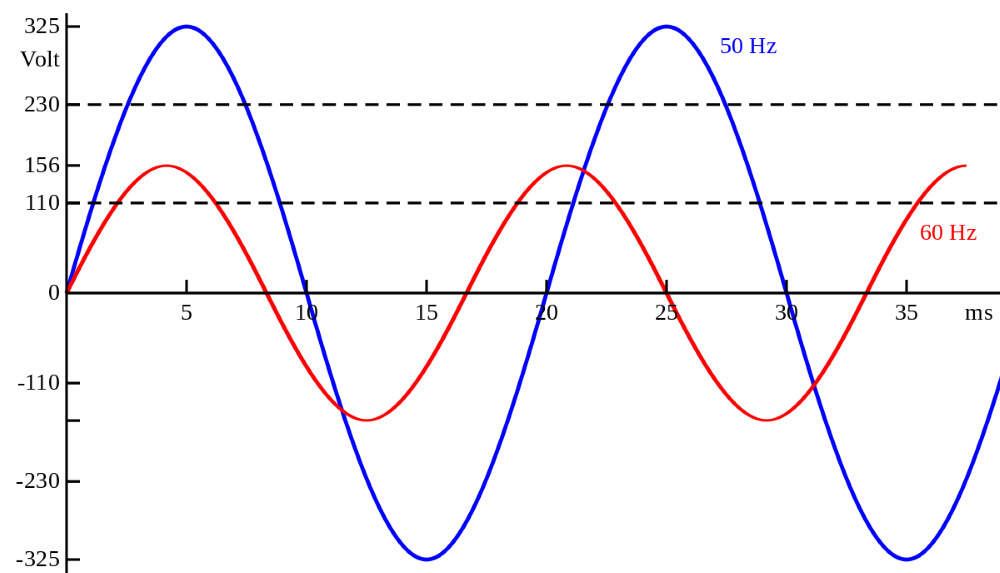
Multiple guitar pickups can be wired either in parallel or in series. Series gives a fatter sound, parallel gives a thinner sound. Almost all guitars have the pickups wired in parallel. That is why combinations on a single-coil instrument don't really build over the individual pickups. Pickup combinations on a Strat are known as 'quack' for their thin sound.
The main reason Fender ( and almost every other manufacturer ) went for parallel wiring is that it makes pickup switching much simpler, and in the beginning ole' Leo barely knew what he was doing, so anything he could get to work with the parts he could get his hands on was going to be good enough. The Strat originally had a three-way switch with no combinations, it wasn't until much later that improvement was added in the factory.
Fender at first did not even have pickup combinations. Strat players invented that ( on Fenders ) by balancing the selector switch in the middle, giving adjacent pickups in parallel because that's how the switch is made. Fender picked up on what they were doing, no pun intended, and added the extra positions to the switch. The original Telecaster wiring was nothing like it is today.
Pickup switching with series wiring is much more complicated. Take a look at a Danelectro wiring diagram and try to figure out what is going on with the switch. It is so simple, and yet totally un-intuitive. Nathan Daniel was a real electrical engineer, and these things were second nature to him, as was good shielding and grounding, things that are lacking in most guitars to this day.
The relation between position, phase, and frequency response for a multi-stringed necked instrument is so complex that it is basically not worth trying to analyze. Better to just move the pickups around and see where they sound best, which is exactly how Fender developed all his instruments, with a lot of input from real players.
There are 'sweet spots' and there are 'dead spots' for pickups, nothing very precise though. Most instruments use the sweet spots, the Stingray actually uses a dead spot. But Fender just couldn't fail, even when he was trying to. There are also spots that tend to cancel each other and should be avoided in combination. In general, the wider the pickup, the more string length it will sense, and the fatter the tone, which is why humbuckers sound 'fat'. Beyond that, it gets much too complicated.
Guitar pickups sound fine on a bass. One of my favorites is a Strat-sized blade humbucker. Very inexpensive, with lots of wiring options. The aforementioned lipsticks work well too. Note that there are no "guitar" and "bass" lipsticks, they're all the same. The main reason guitar pickups are not used on bass is the mismatch between pole pieces and strings is funny looking, although it actually has no effect on the response. That is not a problem on a bass VI.
A guitar pickup is actually a highly efficient radio antenna, even though it is used as a magnetic sensor, technically a tiny electrical generator. The radio frequency (RF) noise piggybacks on top of the desired signal generated by the strings moving in the field of the magnets. It is actually easy to block RF noise without impeding the magnetic sensing function, yet almost no one does it. Some humbuckers have partial metal covers that they don't really need, as a humbucker deals with RF noise through something called 'common mode rejection' - the two coils sense the RF noise in opposite phase, so it cancels when they are combined, while the desired signal is unaffected. This phenomenon was well-known and understood long before Gibsin tried to patent it.
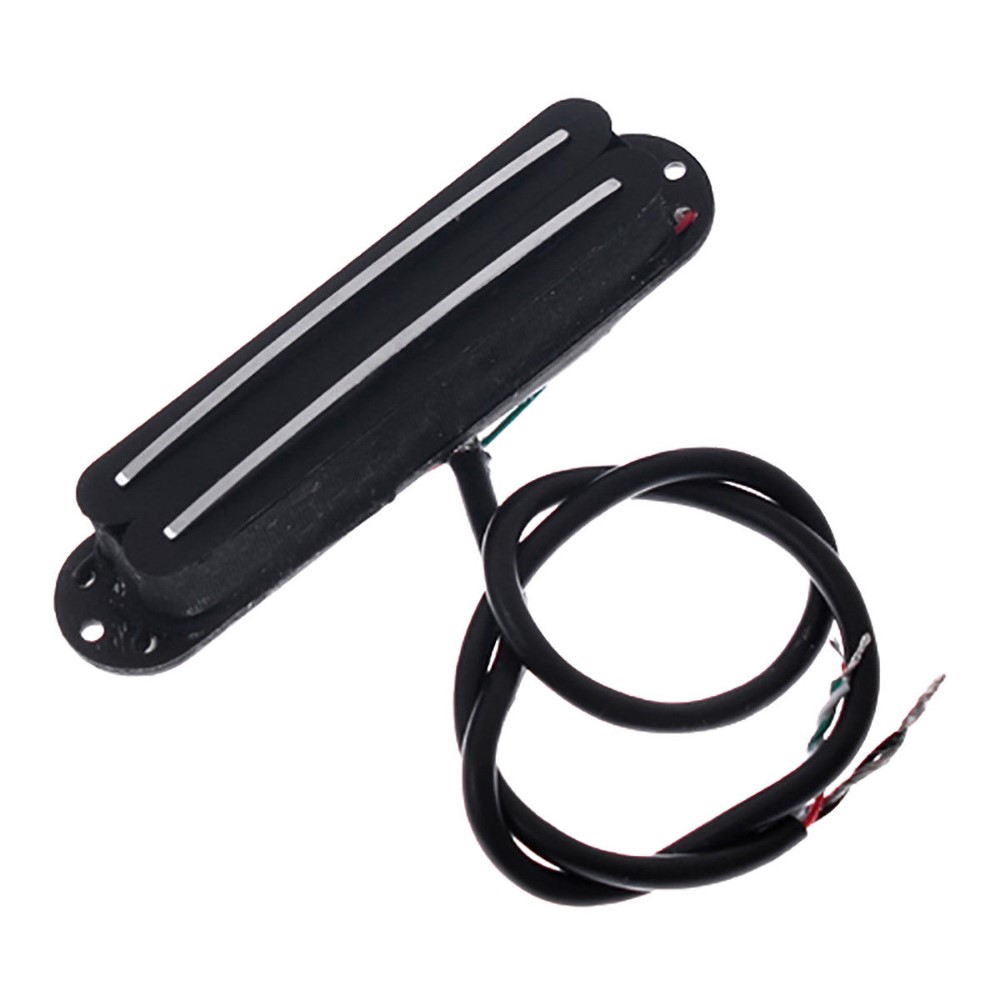
This is one of my favorite pickups for bass or guitar - a Strat-sized blade humbucker. In bulk, I have gotten these for as little as six dollars each, and they sound great. The first project I used one of these on was the Audiovox 736.
The advantage of this pickup is that it has no pole pieces that need to line up with the strings. From an electro-magnetic point of view, it is the overall magnetic field that matters, the individual pole pieces make no difference. But six pole pieces under four strings looks funny. ( Fender has built basses this way, but covered up the pole pieces. )
Another advantage is the four-wire harness, which lets you split the coils and do lots of interesting tricks. My favorite is internal series/parallel switching. Series mode gives you the typical humbucker sound, while parallel mode gives something more like a single-coil, but still humbucking. On a bass, this is like switching between a P and a J. The wiring is as follows:
- Red - coil 1 hot
- Black - coil 1 ground
- Green - coil 2 ground
- White - coil 2 hot
The factory series wiring joins the red and green wires, leaving white as output. A fifth ground wire is joined to black. This gives the following switch wiring:
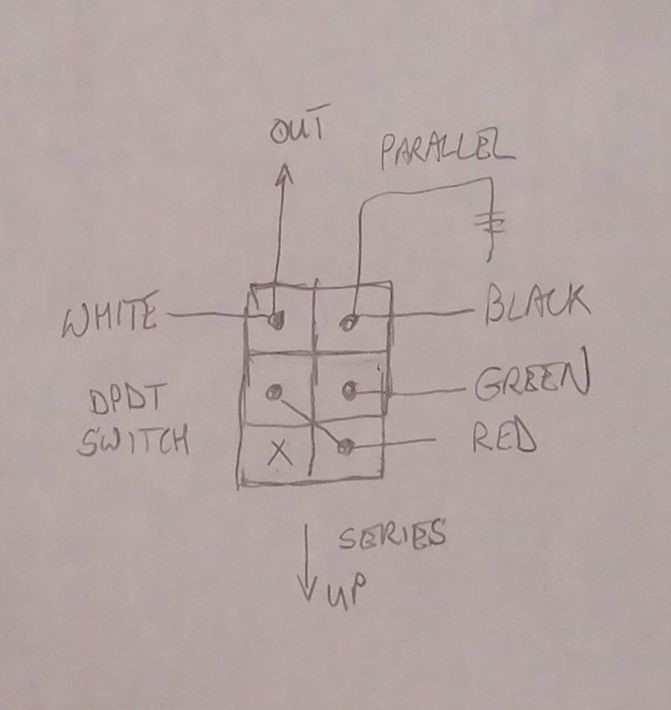
The disadvantage of using one of these pickups on a bass is that the width is for a guitar string spread. This will cover a narrow-gauge bass bridge as is typically used on short-scales, Rics, and Gibsons, but not a standard long-scale Fender geometry. You can get around this by mounting the pickup nearer the neck, where the strings are closer together.
Almost all humbuckers are wired in series internally, which adds even more to their 'fatness'. Switching them to parallel mode internally ( like a Stingray ) makes them even thinner than single coils.
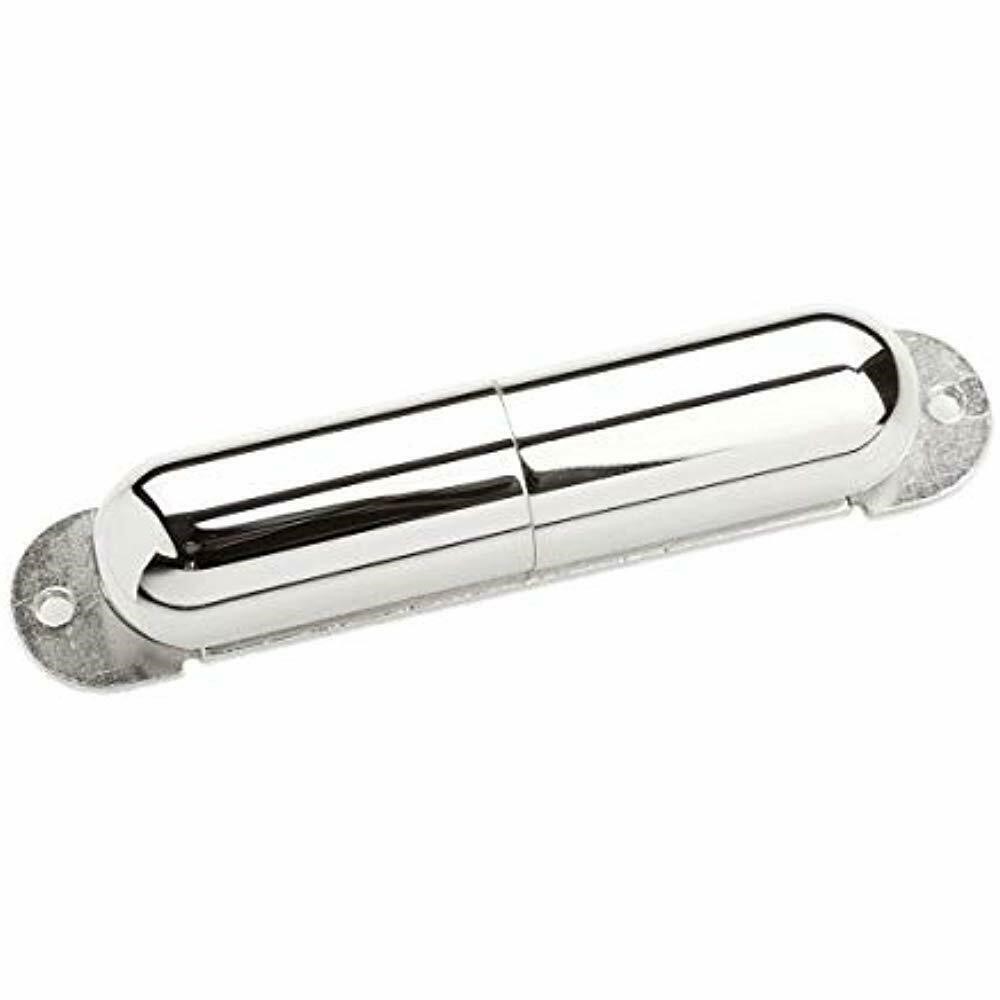
Another of my favorite pickup options is the good old Danelectro lipstick, so-called for their metal lipstick tube casings. These are low-output single-coils that are fully shielded and quiet, and are suitable for any kind of instrument, bass or guitar. Danelectro-sized lipsticks are wider than guitar pickups and will cover any string spread, even on an angle. Note that there are also Strat-sized lipsticks that are made as drop-in replacements for guitars. These are the same width as guitar pickups.
Lipsticks are typically wired in series and can be doubled-up as humbuckers. For a premium, lipsticks can be bought in humbucking sets, but I don't bother. In bulk, I have gotten generic ones for as little as six dollars each. You can see a number of lipstick installations on my projects.
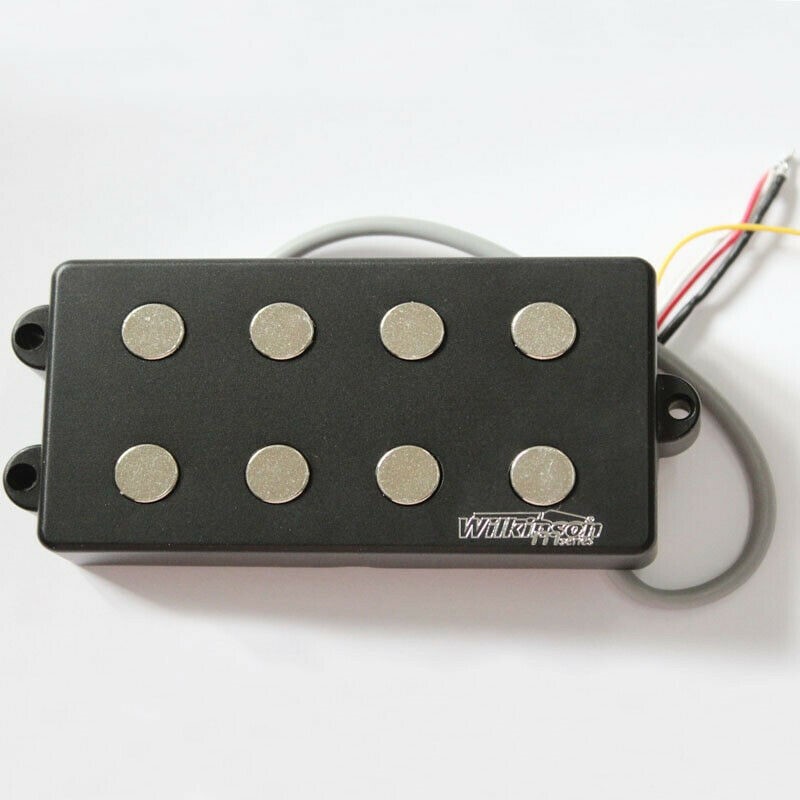
Musicman-style pickups are also fun to play with. They are visually striking, and four-wire models offer the same wiring options as the blade humbucker above. Four-wire soap-bar-type humbuckers are similar.
The sound of a Stingray comes from its deliberately highly colored electronics, which overcompensate for the very badly placed and questionably designed ( coils in parallel? ) pickup. Leo Fender had left his old company and was deliberately trying to do everything differently. Different is not necessarily better, especially when what you're trying to be different from is basically perfection.
Stingrays sound great in spite of themselves. For a bass that sounds great 'naturally', Fender nailed it on his first try with the Precision, which gets its tone from near-perfect pickup placement and deep-voiced quasi-humbucker pickup with series coils. I have always found the thin 'growl' of the Jazz bass wanting. A series/parallel switch makes it sound more like a Precision.
Noise & Shielding
The problem with guitar pickups is that they are natural radio antennas. If you’ve ever seen an AM radio antenna, it is a coil of wire around a ferrite core. Substitute a magnet and you have a guitar pickup. There are two ways of dealing with radio, or “RF”, noise. The first is shielding, which no guitar manufacturer except Danelectro ever made any serious attempt at. The second is “common-mode rejection”, where two pickups sense the same noise with opposite polarity so that when their outputs are combined, the noise cancels itself. This is the basis of the dual-coil “humbucker”. Fender also makes use of this effect – many of their single-coil pickups are humbucking when combined, as are the two coils of the Precision bass.
The Telecaster neck pickup is partially shielded, which is therefore only partially effective. Lipstick pickups are fully shielded and quiet, but most pickups have little or no protection. Just goes to show, the entire guitar industry is mired in nostalgia and stupidity. And judging by how slavishly I try to preserve the Stratocaster oeuvre, maybe so am I.
A drawback of series wiring is that if two pickups are not a hum-canceling pair, putting them in series makes them hum even louder, as everything is additive. Two non-canceling pickups in parallel hum much more quietly, simply because they have much lower output together. This really only applies to the neck-bridge combo on a Strat. Perhaps Leo Fender was deliberately avoiding things he knew would be problems. Danelectro licked the noise problem in a novel, inexpensive, and highly effective way – they completely housed their pickups in shielding – surplus brass ladies’ lipstick tubes. These are the only truly quiet true single coils, even now, sixty years later. No need for hum-canceling pairs, as there simply is no hum. They also enclosed all the electronics in copper foil, and used coaxial wire for the pickup leads, leaving nothing unshielded.
I find it is a waste to try to shield Fender-style single-coils, it just doesn’t work. Once I even painted the inside of a jazz pickup cover and grounded it, it did no good, they’re hopeless. But it is still worth it to shield the control cavity, especially the switch, which has all its guts just hanging out in the open. I dispensed with the shielding entirely on some of the other models, but not on this one. I know that elsewhere I’ve expressed my disdain for humbuckers, but there is no denying that they are much quieter than the single coils I’m using here, so I’m doing anything that might help. To tell the truth, I have never seen more than minimal benefits from even the most thorough shielding, and with three pickups hanging out in the open like old-fashioned AM radio antennas, shielding anything else is kind of pointless, as is obsessing over ground loops and other minutia. It is all drowned out by the chorus of single-coil hum.
One reason Fender uses 250k pots instead of 500k is that the inherent treble-bleed across the lower-valued pots dulls the hum a bit. Rickenbacker compromises with 330k pots, while Gibson uses 500k because with muddy humbuckers they need to hang on to all the treble they can. Danelectro used 1000k ( 1 Meg ) pots because with full shielding they had no noise issues to worry about. That is why Danelectros are so jangly, more so than even Rics. Yet, by combining pickups in series, they can also achieve a full, almost humbucker tone. Simply ingenious. Of course, all of this is less important with a bass. One way to de-hum a bass is to wire something like a 100k resistor from output to ground, generally on the lugs of the volume control. This will cost you some treble and a bit of volume, but so what, it’s a bass. I’ve used tiny potentiometers for this purpose, so you can adjust for the best compromise between noise reduction and treble response.
It is possible to shield the electronics cavity of a guitar with either conductive paint or metal foil. With a few tricks to assure continuity, you can even use aluminum duct tape from the hardware store. However, none of this does much good. There are hundreds of yards of antenna wire in every pickup, and just a few inches of un-shielded wire between the pots and output jack, and the pots are inherently shielded themselves.
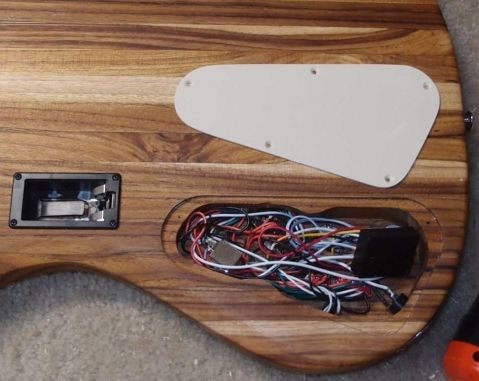
Questions or Inquiries?
Just want to say Hello? Sign the .